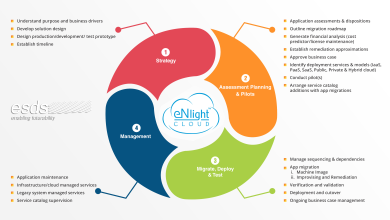
In recent years, cloud computing has emerged as a revolutionary force, reshaping the way businesses operate and individuals interact with technology. This paradigm shift in computing has proven to be a game-changer, offering unprecedented scalability, flexibility, and efficiency. In this article, we will explore the fundamental concepts of cloud computing, its key benefits, and its diverse applications across various industries.
Understanding Cloud Computing:
At its core, cloud computing refers to the delivery of computing services over the internet. Instead of relying on local servers or personal devices to handle applications and store data, users can access computing resources on-demand through a network of remote servers. This model allows for the seamless provision and utilization of resources like storage, processing power, and applications without the need for direct management by the user.
Key Components of Cloud Computing:
- Infrastructure as a Service (IaaS): IaaS provides virtualized computing resources over the internet, including virtual machines, storage, and networking. This enables businesses to scale their infrastructure up or down based on demand, reducing the need for large upfront investments in physical hardware.
- Platform as a Service (PaaS): PaaS offers a platform that allows developers to build, deploy, and manage applications without worrying about the underlying infrastructure. This accelerates the development process, enhances collaboration, and reduces the complexity of application management.
- Software as a Service (SaaS): SaaS delivers software applications over the internet on a subscription basis. Users can access these applications through a web browser without the need for installation or maintenance. Popular examples include Google Workspace, Microsoft 365, and Salesforce.
Key Benefits of Cloud Computing:
- Cost Efficiency: Cloud computing eliminates the need for organizations to invest in and maintain extensive IT infrastructure. With a pay-as-you-go model, businesses can optimize costs based on actual usage.
- Scalability: The cloud allows for seamless scalability, enabling businesses to adjust computing resources according to changing demands. This agility is particularly valuable for startups and enterprises alike.
- Flexibility and Accessibility: Cloud services provide users with the flexibility to access data and applications from any location with an internet connection. This enhances collaboration, remote work capabilities, and overall productivity.
- Security and Reliability: Reputable cloud service providers implement robust security measures to protect data. Additionally, cloud services often include backup and disaster recovery features, ensuring data integrity and availability.
Applications Across Industries:
- Healthcare: Cloud computing facilitates the storage and analysis of vast amounts of medical data, accelerates research through collaborative platforms, and enhances telemedicine capabilities.
- Finance: Financial institutions leverage the cloud for data analytics, risk management, and customer relationship management, while also ensuring compliance with industry regulations.
- Education: Cloud-based learning management systems streamline educational processes, providing students and educators with easy access to resources, collaborative tools, and virtual classrooms.
- E-commerce: Scalable infrastructure and reliable services enable e-commerce businesses to handle varying levels of traffic, ensuring a seamless shopping experience for customers.
Conclusion:
As we continue to witness the evolution of technology, cloud computing stands out as a cornerstone of innovation. Its impact on businesses, individuals, and various industries is profound, offering unparalleled opportunities for growth, efficiency, and transformation. Embracing the cloud is not just a technological choice; it is a strategic decision that can position organizations for success in the digital age.




